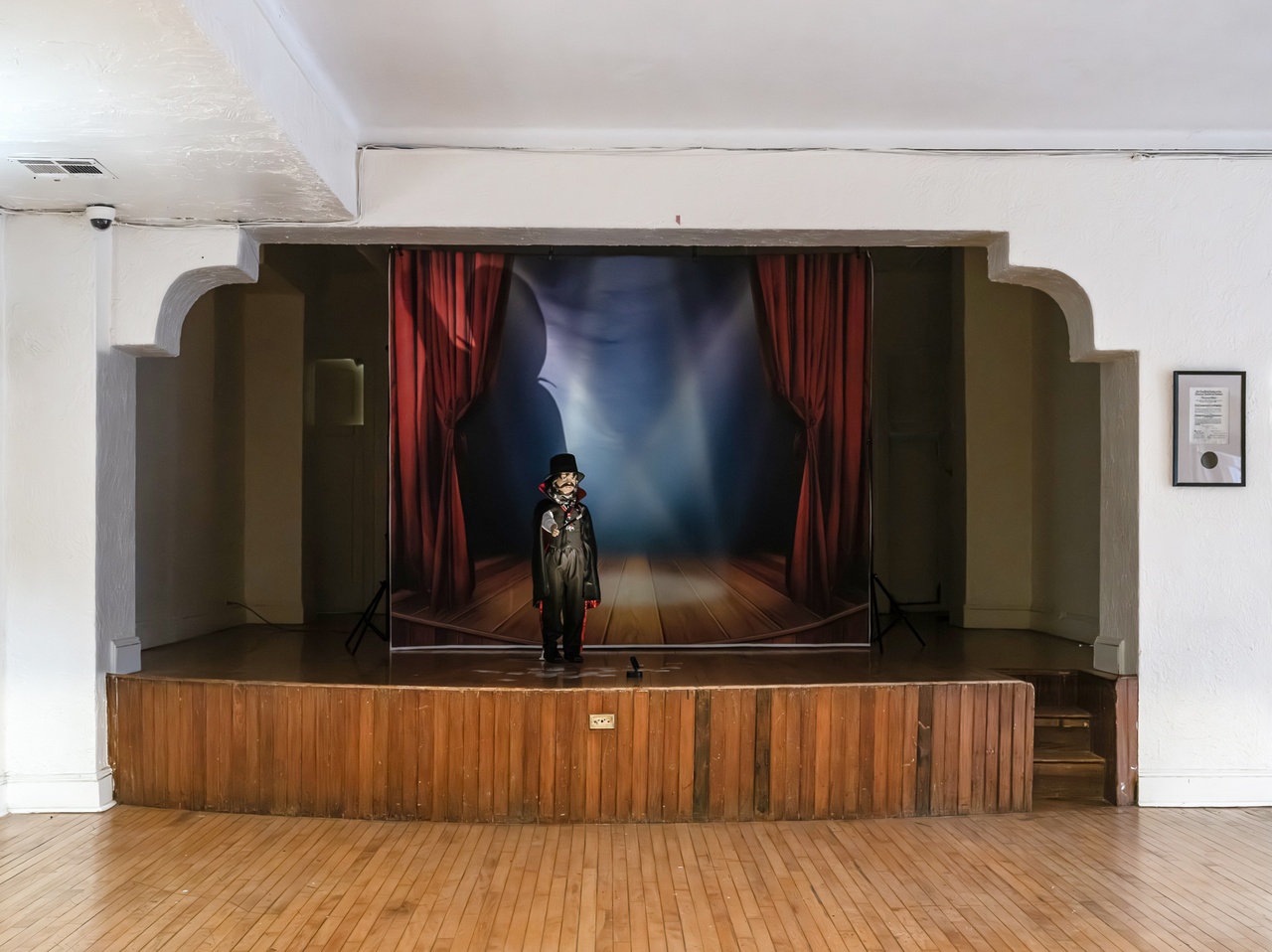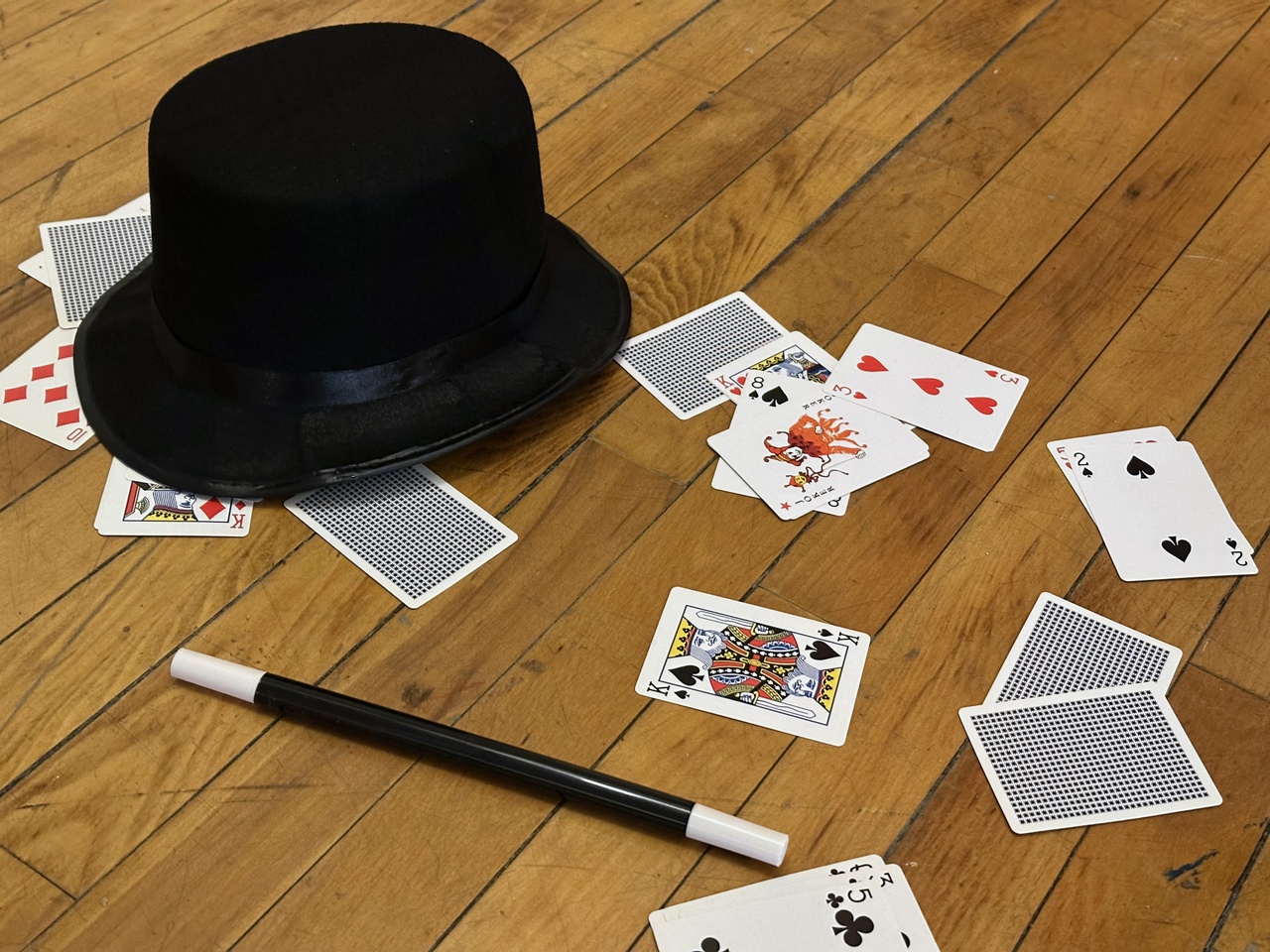“THE TOTALITARIAN” John Miller on the making and unmaking of “The Totalitarian”

“John Miller: The Totalitarian,” The National Exemplar Gallery, New York, 2025
My April 2025 installation, The Totalitarian, at The National Exemplar Gallery’s pop-up space in the Amalgamated Dwellings co-op on New York City’s Lower East Side, came about shortly after a conversation with Eneas Capalbo. Eneas has run the gallery, named after a utopian community in Ohio, since 2011. When New York City became too expensive, he relocated the operation first to Iowa City, then to Milan, and later to Buenos Aires before returning to New York to run it as a pop-up space. There, the co-op allowed him to show work in its community room free of charge. He only had to rent the room during openings because others couldn’t use it at those times. Choosing to show art in such a space is typical of Eneas’s quirky approach.
I first visited the Amalgamated with my wife, Aura Rosenberg, to see a Nate Lowman painting Eneas had on view. But we couldn’t find the gallery. I tried calling Eneas but couldn’t get through. Little did I know he was in Buenos Aires. Eventually, we made our way into the courtyard and went to the security guard’s desk in the co-op’s dimly lit community room. The guard, however, didn’t know where the gallery was. Nor did she know how to turn on the lights. As our eyes adjusted to the darkened room, we could gradually make out a stage in the back, then a painting. We pointed to it, and she exclaimed, “Oh, the toilet paper painting!”
The stage itself was large, about waist-high above the floor. It went back about 40 feet, with a semicircular apron extending into the space. It held a grand piano and a podium and, on the back wall, the painting. Front and center stood the podium with a gavel. Beside the gavel were notes from a co-op board meeting. We climbed the side stairs for a closer view of the work, now lit by our iPhone flashlights. What might have first appeared as a geometric abstraction was an image that referenced toilet paper hoarding during the Covid pandemic.
A few weeks later, Eneas finally received my texts about trying to find the gallery, and he immediately invited me to make a work for the space. With the room’s stage in mind, it struck me that “staging” a painting – or any artwork – is a rhetorical gesture. The conjunction of theater and installation inevitably recalls Michael Fried’s attack on minimal art as “theatrical,” namely as that which “lies between the arts” and is thus supposedly degraded. Subsequent generations of artists, including me, embrace such degradation as a mandate.
Seeing Nate’s show also made me think of the audience. Besides the security guard, Aura and I were the only ones there, yet the presence of a ghost audience lingered on. Given the turn to reactionary politics in the United States (the MAGA swerve to fascism), I recalled Thomas Mann’s allegory in the novella Mario and the Magician (1930): Mann portrayed the magician as a malevolent figure who exerts frightening, mesmerizing control over his audience. I decided to cast this figure as a child mannequin, partly to underscore not only the public’s susceptibility to demagoguery but also the precarity of its obedience to any demagogue in particular.
On Wednesday, April 2, Eneas and Matt Kenny picked up the mannequin and a backdrop from my studio. Then we drove over to the Amalgamated. Matt is an artist who also shows with Eneas. His studio is adjacent to the community room, and he helped coordinate The National Exemplar’s program there.
Setting up was easy. I placed the child mannequin, clad as a magician, center stage against the backdrop. Coincidentally, the stage depicted in the backdrop closely resembled the one on which the figure stood. On the floor before the mannequin, I scattered a deck of playing cards and dubbed the arrangement The Totalitarian. Then we went out for lunch. When we returned, someone had turned the mannequin so that it no longer looked out onto the room. I turned it back around. The following day, Eneas sent an email and an Instagram post announcing that my installation was now on view. These featured a short account, like the one above, of my first visit to the space and how that led to making the work. They also included an image of a top hat, a magic wand, and playing cards.

“John Miller: The Totalitarian,” The National Exemplar Gallery, New York, 2025
One week later, the Amalgamated’s superintendent abruptly told Matt that the co-op board had decided to cancel my show – and, by extension, the rest of The National Exemplar’s program. Matt asked why, and the super said he didn’t know. That same day, Matt and I took the work down and stored it in his studio. However, since Eneas had already rented the community room for the opening, we could put the piece up again.
We could only speculate why my work triggered such an adverse reaction. Eneas reported that shortly after he posted the Instagram announcement, an artist who lived in the building posted a derisive comment. When Eneas tried to take a screenshot of these remarks, the artist had already deleted them. Meanwhile, we heard various rumors: My exhibition text had offended the staff, the mannequin frightened small children, the installation took up too much space, I was a troublemaker, etc. I suspect that, in the exhibition text, my phrase “the MAGA swerve toward fascism” might have been the culprit. However, when I wrote this, I didn’t consider it a provocation. Instead, I thought I was stating a simple fact.
Eneas then sent out two new notices: one announcing the opening, and the other announcing the show’s cancellation. The first, for the opening, featured just the backdrop depicting an empty stage; the second, for the cancellation, depicted the finished work, complete with a small LED spotlight that lit the child figure from below, casting an ominous shadow onto the backdrop.
On April 12, we reinstalled the work for the opening. It turned out to be fun. Many of the co-op’s residents turned out. Children took selfies next to the mannequin, some imitating his gesture with the magic wand. A security guard told us that everyone who came by always had something to say about the piece. She and her friend also posted clips of the work on TikTok, proud of all their hits. The next afternoon, we took everything down for the last time.
I was surprised by how many replies the announcement and the following cancellation update drew. Most offered support. Some wondered if this was a prank. Still others considered it a coup: “You’ve struck gold!” and “Now it’s mythic!” These responses made me consider how mannequins invite all forms of projection and how the art-world ritual of canceled exhibitions, tracing back to Duchamp’s Fountain, supposedly transforms censorship into a kind of success.
Mannequins demand that you identify with them. And, by exuding a “sex appeal of the inorganic,” they can be volatile. You see yourself wearing what they wear. You triumph when they triumph and suffer when they suffer. Thus, The Totalitarian seemingly channeled a range of pent-up feelings about the current political order in the United States.
Co-op board politics are characteristically inscrutable. Even when New York Times art critic Will Heinrich pressed the Amalgamated’s board for more information, it ignored his queries. I live in a co-op with a friend who serves on the board. He half-jokingly describes it as “a very dark place” where shouting matches erupt over the most trivial issues. All it would take to sour The National Exemplar’s agreement with the Amalgamated would be a lone malcontent. All politics is local.
While Mann’s allegory Mario and the Magician inspired The Totalitarian, nothing in the installation explicitly links to that story. Clad in a black top hat and a cape, the diminutive magician comes off as more ingratiating than threatening. Instead, the work’s title and the exhibition text make the connection. A few elements, however, hint at something ominous: the face lit from below, the fake mustache, and – last but not least – the medallion.
Mann’s story unfolds in the fictitious resort town of Torre di Venere in southern Italy. A deformed magician, Cipolla, comes for a one-night performance. Cipolla, however, turns out to be more of a conjurer than a classical magician. His performance consists of hypnotically manipulating and humiliating audience members. His control remains absolute until the end, when after he demeans the waiter, Mario, the spell breaks, and the waiter fatally shoots the magician. Although Cipolla is the allegory’s focal point, the setting, as a depiction of everyday life, offers a significant context.
Mann opens his narrative with these words: “The atmosphere of Torre di Venere remains unpleasant in the memory. From the first moment the air of the place made us uneasy, we felt irritable, on edge ...” Despite the potential for acquaintances to form between locals and tourists, an underlying tension persists. This strain plays out as micro-aggressions in what sociologist Pierre Bourdieu characterizes as legitimation struggles, noting that the most intense conflicts occur within class fractions rather than between broad social classes per se. The politics of the co-op represent similar kinds of legitimation struggles. All politics is local.
In The Mass Psychology of Fascism, Austrian psychoanalyst Wilhelm Reich offered an analysis that contradicts conventional logic. According to Reich, fascism’s power derives not from above, i.e., the dictator towering over the masses, but from below, namely the masses’ desire for an authoritarian leader. In Mann’s story, the motif of susceptibility to hypnosis registers this dynamic. Even when a subject like Mario tries to resist Cipolla, an impulse to obey overcomes his refusal. Mann’s story hinges on the struggle to resist passive suggestibility.
In retrospect, The National Exemplar’s brief existence at the Amalgamated Dwellings proved to be only marginally institutional. The Amalgamated’s co-op board agreed to sponsor Eneas’s program on a handshake agreement. Most ironic is that the board of a cooperative that was founded by a garment workers’ union and housed so many artists should embrace censorship so readily.
The Totalitarian turned out to be ephemeral. In Thomas Mann’s story, Mario avenges Cipolla’s insulting manipulation by shooting him dead. I simply put my diminutive mannequin back in his cardboard box.
John Miller is an artist and writer based in New York and Berlin. He is also a Professor of Professional Practice in Barnard College’s Art History Department.
Image credits: © John Miller

